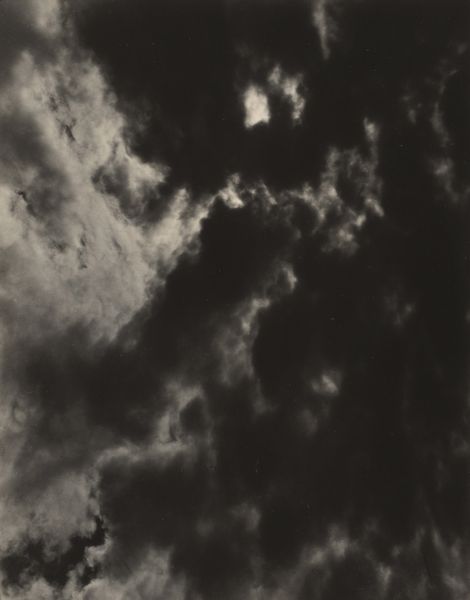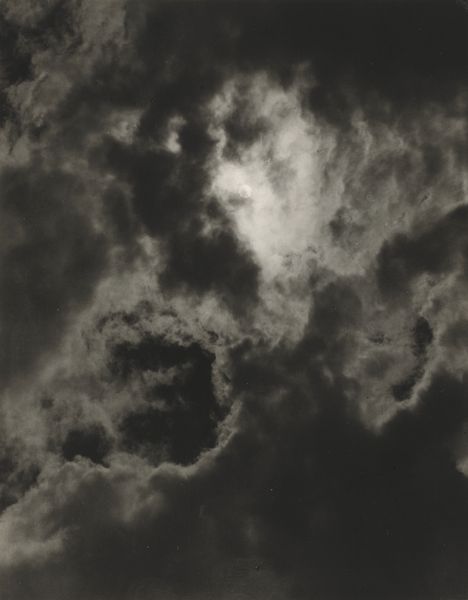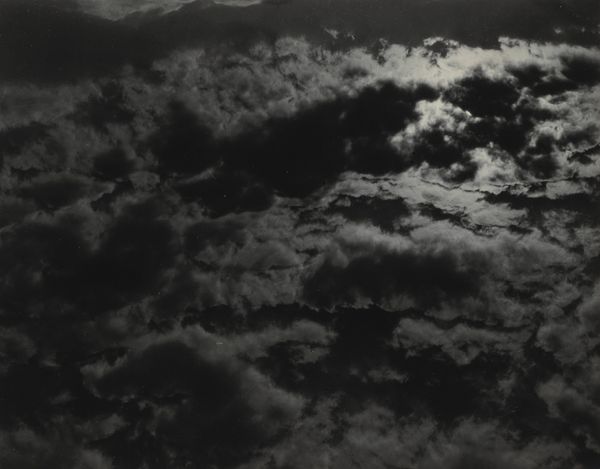
photography
#
black and white photography
#
pictorialism
#
landscape
#
photography
#
monochrome photography
#
abstraction
#
monochrome
#
monochrome
Dimensions: sheet (trimmed to image): 11.7 x 9.2 cm (4 5/8 x 3 5/8 in.) mount: 34.2 x 27.6 cm (13 7/16 x 10 7/8 in.)
Copyright: National Gallery of Art: CC0 1.0
Editor: Here we have Alfred Stieglitz’s black and white photograph, "Songs of the Sky XX2 or Equivalent XX2", which he created sometime between 1923 and 1929. The tonal range in this photographic print is remarkable, the gradations of gray are striking and, for me, convey a spiritual mood, perhaps a sense of the sublime? What do you make of it? Curator: Indeed, these photographs are compelling! Stieglitz was deeply interested in the emotional and symbolic weight of clouds. He called them “Equivalents,” seeing them as visual metaphors for inner states of being. Don't you find that evocative, how an external observation becomes a mirror for something deeply personal? Editor: Yes, absolutely. So, these aren't just photographs of clouds; they're stand-ins for feelings. It’s interesting that they’re titled “Songs” and “Equivalents." Did he mean for them to communicate particular feelings, or was it more open-ended? Curator: It’s intentionally open. Stieglitz sought to distill experiences and emotions into pure form. He invites the viewer to project their own emotions and interpretations onto the image. Think about it – the sky has, across cultures and centuries, symbolized hope, freedom, the divine, and the ephemeral. Editor: So, the enduring appeal of "Songs of the Sky" isn’t necessarily about the specific clouds Stieglitz captured, but their potential to evoke a range of emotional and cultural associations. Curator: Precisely. He harnesses photography’s potential to explore the universal language of symbols, bridging external landscape with internal landscape. Editor: It makes me rethink how I approach photography in general – beyond capturing reality. Thanks! Curator: And thank you, your insights help illuminate how powerful and deeply embedded these visual connections can be.
Comments
No comments
Be the first to comment and join the conversation on the ultimate creative platform.













